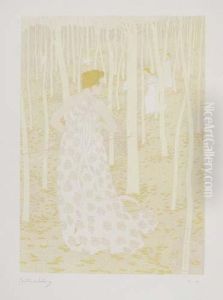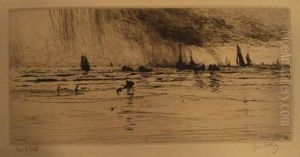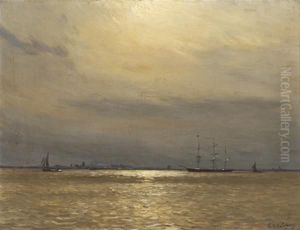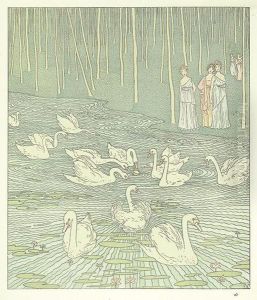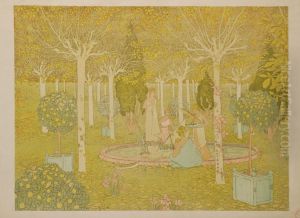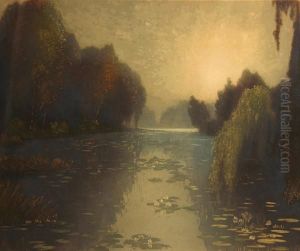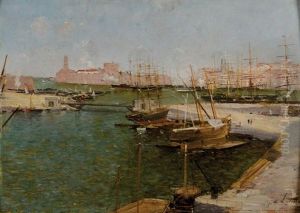Gaston De Latenay Paintings
Gaston de Latenay, born in 1859 and passing away in 1943, was a French artist known for his impressionistic landscapes, cityscapes, and water scenes. His work, characterized by a delicate handling of light and color, reflects the transitionary period of art that bridged the late 19th and early 20th centuries, capturing the essence of Impressionism while hinting at the emerging styles of modernism.
De Latenay's early life was marked by his exposure to the arts, steeped in the rich cultural milieu of France, which was at the forefront of the Impressionist movement. This period was crucial in shaping his artistic direction; he was particularly influenced by the works of the Impressionists, who emphasized light, movement, and everyday subjects. However, De Latenay developed his unique approach, focusing on the interplay of light and water, which became a central theme in his oeuvre.
Throughout his career, Gaston de Latenay exhibited his works in various salons and galleries, gaining recognition among collectors and his peers. His paintings often depicted the French countryside, the Seine River, and Parisian scenes, rendered with a soft palette and a fluid, almost ethereal quality. De Latenay's contribution to the art world was not limited to his paintings; he was also involved in the artistic community, engaging with contemporary trends and debates about the future of French art.
Despite his success, Gaston de Latenay remained somewhat of an enigmatic figure, shying away from the limelight that followed many of his contemporaries. His works, however, have continued to be celebrated for their beauty and tranquility, offering a serene escape into the natural and urban landscapes of France. After his death in 1943, De Latenay's legacy lived on through exhibitions and retrospectives that highlighted his role in the development of modern French art, ensuring his place in the annals of art history.
